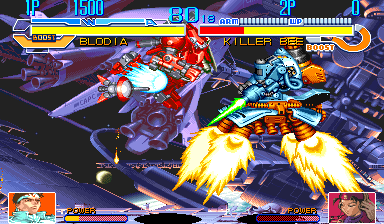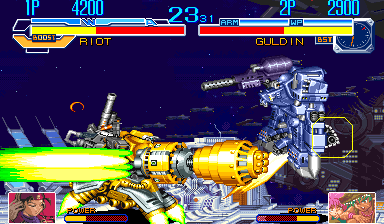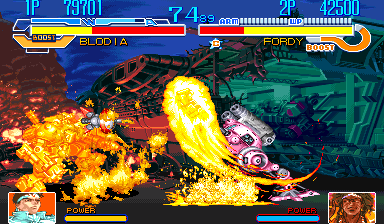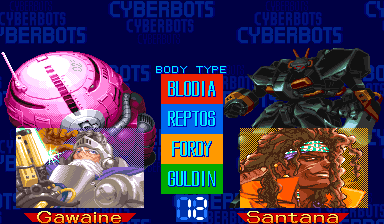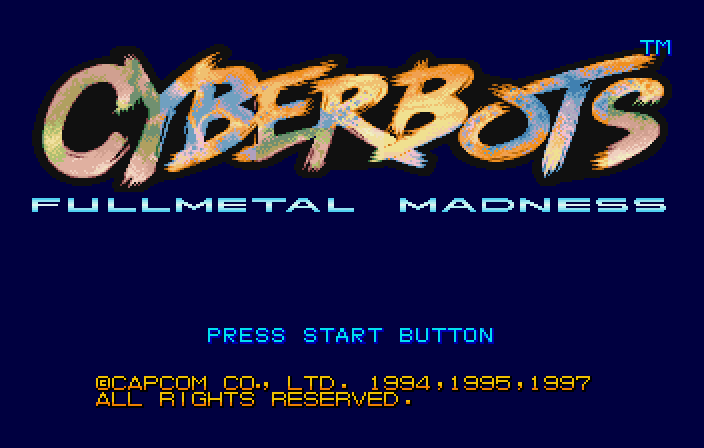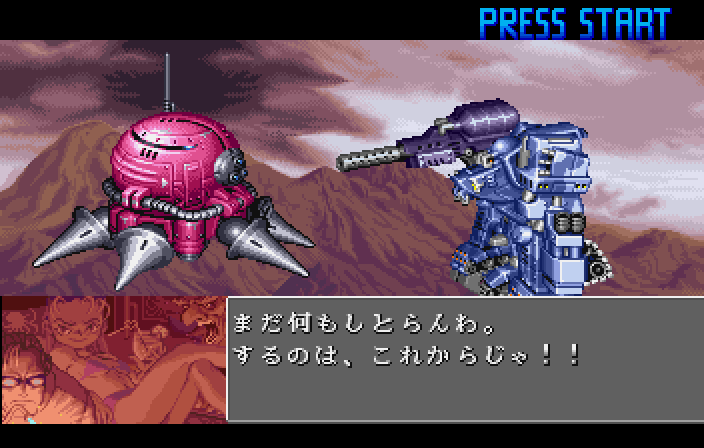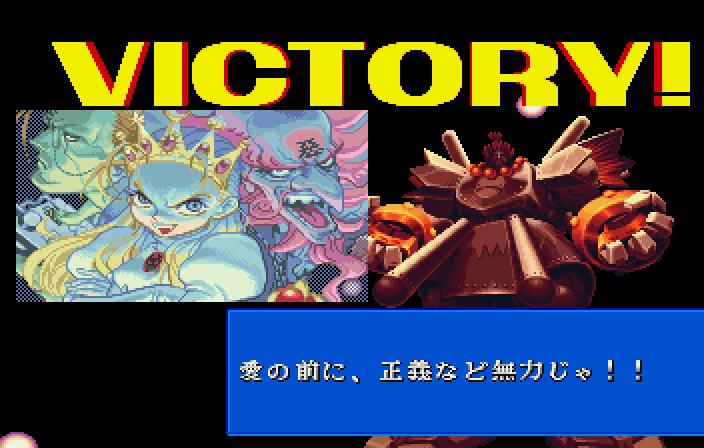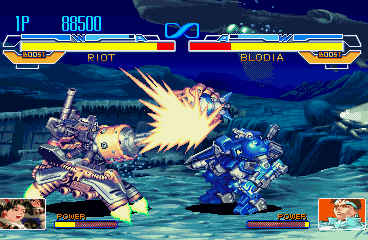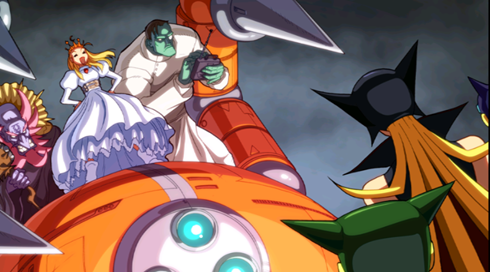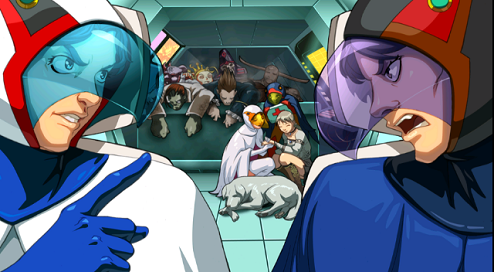Certainly not Slam Masters II: Ring of Destruction, and not even Red Earth!
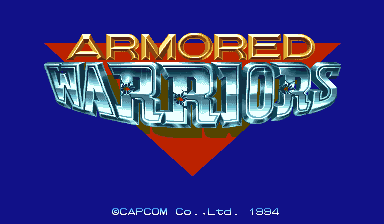
First though, we have to go to the world of scrolling brawlers for just a moment.








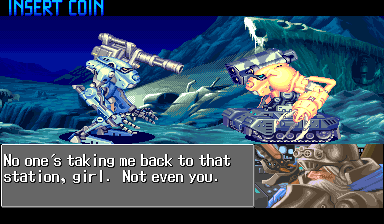

 "I'll make father proud." Age: 21 Height / Weight: 175cm / 72kg Blood Type: A (CV: Tōru Furuya) a year before the game's events, and he enters the VA battle circuit to uncover the truth.
|  "You were an unworthy opponent." Age: 28 Height / Weight: 176cm / 58kg Blood Type: B (CV: Urara Takano) been tasked with retrieving an escaped prisoner from their labs, unaware of their horrors.
|  "You can't touch this machine." Age: 29 Height / Weight: 195cm / 97kg Blood Type: B (CV: Kiyoyuki Yanada) hears there's military-grade VA parts in Federation Forces colonies and heads out to make a killing. |
 "Youth is precious, cherish it!" Age: 64 Height / Weight: 180cm / 84kg Blood Type: A (CV: Tesshō Genda) the 'training accident' that killed Ken Saotome, he is brought out of seclusion by this crisis.
|  "I love our mean machine!" Age: 14 & 11 Height / Weight: 160cm / 52kg & 148cm / 32kg Blood Type: A? & A? (CV:Kappei Yamaguchi & Kae Araki) abandoned VA and hop in for a ride, later finding Arieta on the run from the Federation Forces.
|  "Stop me, I'm out of control!" Age: 17 Height / Weight: 164cm / 48kg Blood Type: AB RH- (CV: Mika Kanai) Forces lab after being experimented on, is she the key to their doomsday weapon? |
 "I told you before we are not your enemy." TESSAN HAGANE Age: 17 & 38 Height / Weight: 168cm / 60kg & 214cm / 147kg Blood Type: O & AB (CV: Ryō Horikawa & Banjō Ginja) Resistance leader and Tessan is his bodyguard, fighting to stop the Federation Forces.
|  "At last, I can pay back some of the debt I owe my friend..." Age: Unknown Height / Weight: 235cm / 508kg Blood Type: A? (CV: Shōzō Iizuka) machine by Federation Force experiments. He's responsible for Ken Saotome's death. |
 "Hahahahahaha! Another fine addition to my collection!" DE DEATHSATAN IX Age: 13 Height / Weight: 158cm / 40kg Blood Type: O (CV: Etsuko Kozakura) a space pirate trio with Xavier and Dave who steal VAs and generally just stir up trouble.
|  "You human shall perish!" Age: Unknown Height / Weight: Unknown Blood Type: Unknown (CV: ???) What kind of horrifying monstrosity have the Federation Forces created...? |


 Height / Weight: 14.5m / 38.2t Arm: B•Power Knuckle Legs: B•Command Walker Weapon: Bit Boost: Eight-Way Dash
|  Height / Weight: 11.2m / 53.1t Arm: Laser Blade Legs: Treads Weapon: Electric Net Boost: Eight-Way Dash
|  Height / Weight: 12.5m / 70.5t Arm: Rocket Arm Legs: Turbo Jets Weapon: Vulcan Cannon Boost: Flight |
 Height / Weight: 16.0m / 31.6t Arm: R•Power Knuckle Legs: R•Command Walker Weapon: Laser Cannon Boost: Eight-Way Dash
|  Height / Weight: 11.2m / 41.2t Arm: Chain Spark Legs: Treads Weapon: Wide Range Missile Boost: Eight-Way Dash
|  Height / Weight: 11.8m / 39.6t Arm: Heat Rod Legs: Insectroid Weapon: Bit Boost: Jump |
 Height / Weight: 11.0m / 29.3t Arm: F•Power Knuckle Legs: F•Command Walker Weapon: Homing Missile Boost: Eight-Way Dash
| 
Height / Weight: 12.8m / 33.9t Arm: Force Claw Legs: Insectroid Weapon: Wide Range Missile Boost: Jump
|  Height / Weight: 13.8m / 43.4t Arm: Laser Blade Legs: Turbo Jets Weapon: Mine Shooter Boost: Flight |
 Height / Weight: 13.6m / 41.6t Arm: G•Power Knuckle Legs: G•Command Walker Weapon: Burner Boost: Eight-Way Dash
|  Height / Weight: 12.3m / 46.1t Arm: Force Claw Legs: Treads Weapon: Homing Missile Boost: Eight-Way Dash
|  Height / Weight: 13.2m / 43t Arm: Death Drill Legs: Insectroid Weapon: Mine Shooter Boost: Jump |
 Height / Weight: 13.2m / 34.1t Arm: Gaits Unique Legs: Gaits Unique Weapon: Gaits Spread Missile Boost: Eight-Way Dash
|  Height / Weight: 17.2m / 34.5t Arm: Helion Unique Legs: Helion Unique Weapon: Helion Bombs Boost: Flight |
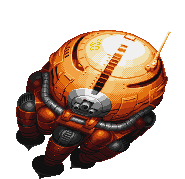 Height / Weight: 11.2m / 41.6t Arm: Super-8 Tentacles Legs: Super-8 Tentacles Weapon: Super-8 Homing Missile Boost: Jump
|  Height / Weight: Unknown Arm: Warlock Unique Legs: Warlock Unique Weapon: Warlock Vulcan Boost: Flight |
